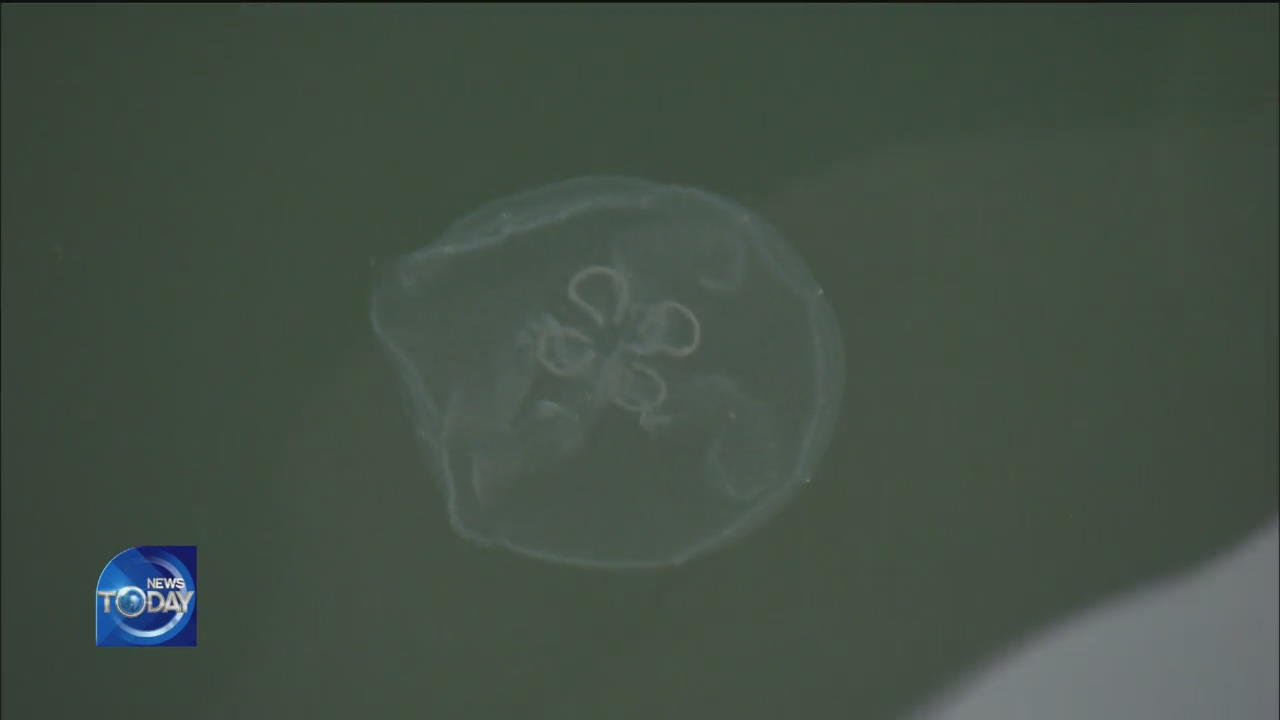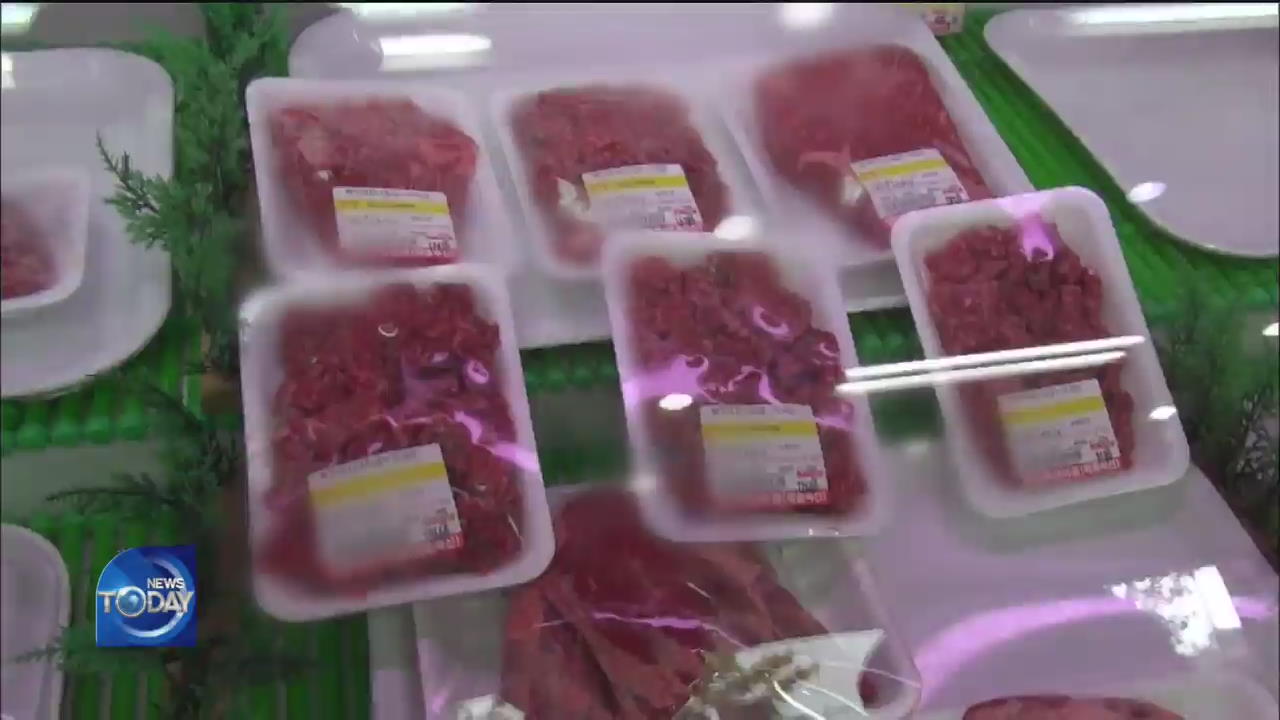SURGE IN JELLYFISH CAUSE TROUBLE TO FISHERMEN
입력 2020.07.20 (15:04)
수정 2020.07.20 (16:47)
읽어주기 기능은 크롬기반의
브라우저에서만 사용하실 수 있습니다.
[Anchor Lead]
Poisonous jellyfish are an unwelcome guest in the summer, together with the red tide and high water temperature. Korean fishermen are having trouble dealing with a surging number of jellyfish along the southern coast.
[Pkg]
Waters off Geoje, Gyeongsangnam-do Province are known for their abundance of anchovies and shrimps. Two shrimp catching vessels sail the sea, dragging a 30-meter-long net between them. When the fishermen pull up the net 30 minutes later, it is filled with transparent jellyfish. These are moon jellyfish, a scourge that returns every year around this time to torment Korean fishermen.
[Soundbite] KIM SEONG-JIN(GEOJE FISHERMAN) : "We can't sell the shrimps mixed in with jellyfish. I wish we don't see any jellyfish even if our shrimp catch is smaller."
The arrival of jellyfish in the southern coast caused a poisonous jellyfish alert to be issued one month earlier than in previous years. The number of jellyfish is expected to spike this year as the seawater is about one degree warmer than previous years and the warm currents in nearby waters have grown stronger.
[Soundbite] KIM KYOUNG-YEON(RESEARCHER, NAT'L INSTITUTE OF FISHERIES SCIENCE) : "We need to be careful as the jellyfish show up in greater numbers this year and two species of jellyfish are coming into the coastal areas in volumes after the rainy season."
Jellyfish in the southern coast cause around 300 billion won in fishing losses every year. Authorities and fishermen have started eliminating jellyfish earlier than usual to lessen the damage, but their efforts are falling short as the number of jellyfish explodes every day.
Poisonous jellyfish are an unwelcome guest in the summer, together with the red tide and high water temperature. Korean fishermen are having trouble dealing with a surging number of jellyfish along the southern coast.
[Pkg]
Waters off Geoje, Gyeongsangnam-do Province are known for their abundance of anchovies and shrimps. Two shrimp catching vessels sail the sea, dragging a 30-meter-long net between them. When the fishermen pull up the net 30 minutes later, it is filled with transparent jellyfish. These are moon jellyfish, a scourge that returns every year around this time to torment Korean fishermen.
[Soundbite] KIM SEONG-JIN(GEOJE FISHERMAN) : "We can't sell the shrimps mixed in with jellyfish. I wish we don't see any jellyfish even if our shrimp catch is smaller."
The arrival of jellyfish in the southern coast caused a poisonous jellyfish alert to be issued one month earlier than in previous years. The number of jellyfish is expected to spike this year as the seawater is about one degree warmer than previous years and the warm currents in nearby waters have grown stronger.
[Soundbite] KIM KYOUNG-YEON(RESEARCHER, NAT'L INSTITUTE OF FISHERIES SCIENCE) : "We need to be careful as the jellyfish show up in greater numbers this year and two species of jellyfish are coming into the coastal areas in volumes after the rainy season."
Jellyfish in the southern coast cause around 300 billion won in fishing losses every year. Authorities and fishermen have started eliminating jellyfish earlier than usual to lessen the damage, but their efforts are falling short as the number of jellyfish explodes every day.
■ 제보하기
▷ 카카오톡 : 'KBS제보' 검색, 채널 추가
▷ 전화 : 02-781-1234, 4444
▷ 이메일 : kbs1234@kbs.co.kr
▷ 유튜브, 네이버, 카카오에서도 KBS뉴스를 구독해주세요!
- SURGE IN JELLYFISH CAUSE TROUBLE TO FISHERMEN
-
- 입력 2020-07-20 15:08:29
- 수정2020-07-20 16:47:43

[Anchor Lead]
Poisonous jellyfish are an unwelcome guest in the summer, together with the red tide and high water temperature. Korean fishermen are having trouble dealing with a surging number of jellyfish along the southern coast.
[Pkg]
Waters off Geoje, Gyeongsangnam-do Province are known for their abundance of anchovies and shrimps. Two shrimp catching vessels sail the sea, dragging a 30-meter-long net between them. When the fishermen pull up the net 30 minutes later, it is filled with transparent jellyfish. These are moon jellyfish, a scourge that returns every year around this time to torment Korean fishermen.
[Soundbite] KIM SEONG-JIN(GEOJE FISHERMAN) : "We can't sell the shrimps mixed in with jellyfish. I wish we don't see any jellyfish even if our shrimp catch is smaller."
The arrival of jellyfish in the southern coast caused a poisonous jellyfish alert to be issued one month earlier than in previous years. The number of jellyfish is expected to spike this year as the seawater is about one degree warmer than previous years and the warm currents in nearby waters have grown stronger.
[Soundbite] KIM KYOUNG-YEON(RESEARCHER, NAT'L INSTITUTE OF FISHERIES SCIENCE) : "We need to be careful as the jellyfish show up in greater numbers this year and two species of jellyfish are coming into the coastal areas in volumes after the rainy season."
Jellyfish in the southern coast cause around 300 billion won in fishing losses every year. Authorities and fishermen have started eliminating jellyfish earlier than usual to lessen the damage, but their efforts are falling short as the number of jellyfish explodes every day.
Poisonous jellyfish are an unwelcome guest in the summer, together with the red tide and high water temperature. Korean fishermen are having trouble dealing with a surging number of jellyfish along the southern coast.
[Pkg]
Waters off Geoje, Gyeongsangnam-do Province are known for their abundance of anchovies and shrimps. Two shrimp catching vessels sail the sea, dragging a 30-meter-long net between them. When the fishermen pull up the net 30 minutes later, it is filled with transparent jellyfish. These are moon jellyfish, a scourge that returns every year around this time to torment Korean fishermen.
[Soundbite] KIM SEONG-JIN(GEOJE FISHERMAN) : "We can't sell the shrimps mixed in with jellyfish. I wish we don't see any jellyfish even if our shrimp catch is smaller."
The arrival of jellyfish in the southern coast caused a poisonous jellyfish alert to be issued one month earlier than in previous years. The number of jellyfish is expected to spike this year as the seawater is about one degree warmer than previous years and the warm currents in nearby waters have grown stronger.
[Soundbite] KIM KYOUNG-YEON(RESEARCHER, NAT'L INSTITUTE OF FISHERIES SCIENCE) : "We need to be careful as the jellyfish show up in greater numbers this year and two species of jellyfish are coming into the coastal areas in volumes after the rainy season."
Jellyfish in the southern coast cause around 300 billion won in fishing losses every year. Authorities and fishermen have started eliminating jellyfish earlier than usual to lessen the damage, but their efforts are falling short as the number of jellyfish explodes every day.
이 기사가 좋으셨다면
-
좋아요
0
-
응원해요
0
-
후속 원해요
0

















이 기사에 대한 의견을 남겨주세요.